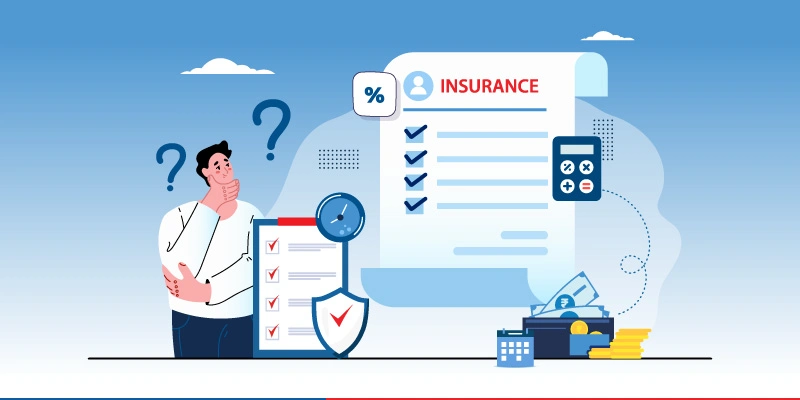Life insurance coverage provides a death benefit, a sum of money paid to your beneficiaries when you pass away, to cover expenses like lost income, funeral costs, and debts. The two main types are term life for a specific period and permanent life for your whole life. Benefits can be paid as a lump sum or in installments, and some permanent policies also build cash value.
What Life Insurance Coverage Offers

- Death Benefit: The primary benefit of life insurance is a financial payout to your chosen beneficiaries upon your death.
- Financial Security: The death benefit helps your family maintain their financial stability by replacing lost income and covering living expenses such as housing, food, and bills.
- Debt Coverage: It can be used to pay off outstanding debts, including mortgages, personal loans, and credit card balances.
- Funeral Costs: The payout can cover funeral and burial expenses, preventing your loved ones from incurring these costs.
- Legacy: You can leave a legacy or charitable donation for your loved ones or organizations you care about.
- Cash Value (for Permanent Policies): Some types of permanent life insurance policies accumulate cash value over time, which can be borrowed against or withdrawn.
- Trusts and Probate: A life insurance trust can provide specific instructions for how and when the death benefit is paid to beneficiaries, bypassing the lengthy probate process.
Main Types of Life Insurance
- Term Life Insurance: Provides coverage for a fixed period, such as 10, 20, or 30 years. If you die during the policy term, your beneficiaries receive the death benefit.
- Permanent Life Insurance: Offers lifetime coverage as long as premiums are paid. Policies like whole life insurance are designed to be permanent and often build cash value.
Why Life Insurance Matters
Think about your monthly expenses: rent or mortgage, bills, groceries, childcare, and loans. Now imagine those bills still arriving after you’re gone, but without your paycheck coming in. That’s where life insurance steps in. It ensures your loved ones don’t struggle financially when they’re already dealing with the emotional burden of losing you.
In many cases, families rely heavily on one breadwinner’s income. Without life insurance, the sudden absence of that income could lead to unpaid bills, foreclosures, or even children dropping out of school due to financial hardship. Essentially, life insurance helps maintain the same quality of life for your family when you’re not around to provide for them.
It’s not just about financial stability, though. Life insurance also gives you peace of mind. Knowing that your loved ones will be protected allows you to focus on living life fully rather than worrying about the “what-ifs.” It acts as a legacy tool as well, helping you leave behind something meaningful.
The Basic Concept of Coverage
At its simplest, life insurance coverage revolves around three elements: premiums, benefits, and policy terms. You pay a premium (monthly, quarterly, or annually), and the insurer guarantees a benefit payout when a covered event occurs, usually death. Some policies also offer living benefits, where you can access funds during your lifetime under certain conditions, like critical illness or retirement planning.
Coverage amounts vary widely, from a modest $50,000 policy to multi-million-dollar plans. The amount you choose depends on factors such as your income, debts, dependents, and future financial goals. Importantly, the earlier and healthier you are when purchasing coverage, the lower your premiums usually are.
When someone asks, “What’s included in life insurance coverage?” the answer isn’t just death protection. It’s a package of financial support, investment opportunities, and optional riders that can be tailored to your unique situation.
Types of Life Insurance Policies

Life insurance comes in different flavors, much like coffee. Some prefer a quick shot of espresso (term insurance), while others go for a rich, long-lasting brew (whole life). Choosing the right type depends on your needs, budget, and long-term goals.
Term Life Insurance
Term life insurance is the most straightforward and affordable option. It provides coverage for a specific period, commonly 10, 20, or 30 years. If you pass away during that term, your beneficiaries receive the death benefit. If you outlive the term, the coverage ends, and there’s no payout unless you renew or convert it to a permanent plan.
This type is ideal for young families, new homeowners, or anyone with temporary financial responsibilities. Think of it as renting an apartment; you get the protection you need for the time you need it, without long-term commitments. The downside? Once the term expires, premiums often jump significantly if you renew.
Whole Life Insurance
Whole life insurance is like buying a house; you own it for life, and it builds value over time. Unlike term insurance, whole life lasts as long as you live (as long as you pay premiums). It also has a cash value component that grows over time, almost like a savings account within the policy.
This cash value can be borrowed against, withdrawn, or used to pay premiums. It’s a great option for people who want both protection and a financial tool that accumulates value. However, whole life premiums are much higher compared to term policies, which may not fit everyone’s budget.
Universal Life Insurance
Universal life offers more flexibility than whole life. You can adjust your premiums and death benefits as your financial situation changes. It also builds cash value, which grows based on interest rates set by the insurer.
For example, if you have extra money one year, you can pay more into the policy to boost the cash value. If you’re tight on funds another year, you might pay less, as long as the policy has enough value to cover costs. It’s a good balance for people seeking lifelong coverage with adjustable features.
Variable Life Insurance
Variable life insurance adds an investment twist. The cash value can be invested in different sub-accounts, similar to mutual funds. This means you have the potential for higher returns, but also higher risks. If your investments perform well, your policy’s cash value and death benefit could grow significantly. But if they perform poorly, both could decrease.
Core Components of Life Insurance Coverage

Every life insurance policy, regardless of type, shares common elements. These are the building blocks that determine how much protection you get and how it works.
Death Benefit Explained
The death benefit is the main reason most people buy life insurance. It’s the lump sum paid to your beneficiaries after your death. This money can be used for anything funeral costs, mortgage payments, education expenses, or simply daily living needs.
The amount you choose should be based on your family’s financial needs. A common rule of thumb is 10–15 times your annual income. So, if you earn $50,000 a year, you might consider coverage between $500,000 and $750,000.
Cash Value Accumulation
Some life insurance policies, like whole and universal life, include a cash value feature. This acts as a built-in savings account that grows over time. The insurer invests part of your premiums, and the value accumulates at a guaranteed or variable rate.
What makes this appealing is that you can borrow against the cash value for emergencies, retirement, or even to pay premiums. However, loans reduce the death benefit if not repaid. Think of it as having a piggy bank within your insurance policy. It’s your money, but tapping into it comes with trade-offs.
Premium Payments and Flexibility
Premiums are the lifeblood of your policy. They’re the regular payments you make to keep your coverage active. Depending on the type of policy, premiums can be fixed (like in term or whole life) or flexible (like in universal life).
Missed payments could cause your policy to lapse, leaving you without coverage when you need it most. Some policies allow grace periods or let you use accumulated cash value to cover missed payments. Others even offer “paid-up” options where you can stop paying after a certain point, and the policy remains in force.
Riders and Add-ons in Life Insurance Coverage

Life insurance policies aren’t just about the basics; they can be customized with riders, which are optional add-ons that expand your coverage. Think of riders as toppings on a pizza: the base policy is the crust, but the riders let you tailor it to your taste and needs.
Accidental Death Benefit Rider
This rider provides an extra payout if you die in an accident. For example, if your base policy offers $500,000 in coverage and you have a $250,000 accidental death rider, your beneficiaries would receive $750,000 if your death were accident-related.
Critical Illness Rider
If you’re diagnosed with a serious illness such as cancer, heart attack, or stroke, this rider allows you to access a portion of your death benefit while you’re still alive. That money can help cover medical bills, alternative treatments, or everyday expenses while you focus on recovery.
Disability Income Rider
The disability income rider provides a monthly income if you become disabled and unable to work. Imagine being the primary breadwinner, then suddenly facing a severe injury that prevents you from earning a paycheck. Without this rider, your financial stability could collapse. With it, you essentially have a built-in safety net that covers living expenses until you recover or reach retirement age.
Pays a percentage of your monthly income, helping with essentials like rent, groceries, and medical bills. It can be a lifesaver for families who depend on a single income. While the additional premium might feel like an extra burden now, it’s far less costly than facing years of lost wages without support.
Waiver of Premium Rider
The waiver of premium rider is another smart add-on. If you become disabled and unable to work, this rider ensures your life insurance premiums are waived while keeping your coverage active. Without it, you might be forced to surrender your policy during tough times just when you need protection the most.
Guarantee that your policy will never slip away due to circumstances beyond your control. While you focus on healing, your coverage stays intact, protecting your family’s future.
Long-Term Care Rider
As healthcare costs rise, the long-term care rider has become increasingly valuable. It allows you to use part of your death benefit to cover expenses like nursing home care, assisted living, or in-home care. With people living longer than ever, the risk of needing long-term care is higher, and traditional health insurance rarely covers these costs.
A hybrid between life insurance and long-term care insurance, ensuring you won’t drain your savings or burden loved ones if you need extended care. Any unused benefit still goes to your beneficiaries, making it a win-win solution.
Factors That Influence Coverage

Choosing life insurance isn’t just about picking a number and signing a contract. Several personal and financial factors play a huge role in how much coverage you can get, how much you’ll pay, and what options are available.
Age and Health
Your age and health are the two biggest influencers of life insurance coverage. Insurers see young, healthy individuals as lower risk, so they’re rewarded with lower premiums and higher coverage options. On the other hand, older individuals or those with chronic conditions often face higher rates or may even be denied coverage.
Occupation and Lifestyle
Your job and lifestyle habits also matter. High-risk professions like construction, aviation, or law enforcement typically come with higher premiums because the chance of accidental death is greater. Similarly, lifestyle choices such as smoking, heavy drinking, or extreme sports can affect both eligibility and cost.
Policy Duration and Payout Options
The length of your policy and the way benefits are structured also shape your coverage. A 30-year term policy will cost more than a 10-year term, but it offers longer protection. Permanent policies like whole or universal life come with higher costs but also provide lifelong security.
Payout options matter too. While most policies offer a lump-sum death benefit, some allow installment payments or annuity-style distributions. These options can be tailored to fit your family’s needs, ensuring the money lasts as long as it’s needed.
How Much Life Insurance Coverage Do You Really Need?

One of the most common questions people ask is, “How much life insurance is enough?” The truth is, there’s no magic number; it all depends on your personal situation. However, several methods can help you estimate the right amount.
A simple rule of thumb is to multiply your annual income by 10 to 15. For example, if you earn $60,000 a year, you’d look at coverage somewhere between $600,000 and $900,000. This ensures your family can maintain their lifestyle for years after your passing.
Another approach is the DIME method, which considers four major areas:
-
Debt – How much do you owe (mortgage, credit cards, car loans)?
-
Income – How many years would your family need income replacement?
-
Mortgage – How much is left on your home loan?
-
Education – What are the estimated costs of your children’s schooling?
Who Should Buy Life Insurance?

Life insurance isn’t just for parents or people with mortgages; it’s for anyone who has someone depending on them. Let’s break it down:
-
Young Professionals: Even if you’re single, life insurance can cover student loans or provide for aging parents. Plus, buying early locks in low premiums.
-
Married Couples: Whether you’re both earning or one is the main breadwinner, coverage ensures financial security for your partner.
-
Parents: This is a no-brainer. Kids rely on you for food, shelter, education, and love. Life insurance ensures they won’t struggle financially if you’re gone.
-
Business Owners: Life insurance can protect your company, fund buy-sell agreements, and keep operations running smoothly if something happens to you.
-
Retirees: Even after retirement, life insurance can help cover final expenses, leave a legacy, or provide long-term care benefits.
Misconceptions About Life Insurance Coverage

Life insurance is often misunderstood, which prevents many people from buying it. Let’s bust some of the biggest myths:
“It’s too expensive.”
In reality, term life insurance is often cheaper than a daily cup of coffee. A healthy 30-year-old can get $500,000 of coverage for as little as $20–$30 per month.
“I don’t need it because I’m young and healthy.”
That’s actually the best time to buy! Premiums are lowest when you’re young, and your health status can lock in a great deal for decades.
“My employer’s coverage is enough.”
Many jobs offer group life insurance, but it’s usually only 1–2 times your salary. That’s not nearly enough to cover your family’s long-term needs. Plus, if you leave your job, you may lose the coverage.
“Stay-at-home parents don’t need insurance.”
Wrong. If something happened to a stay-at-home parent, the surviving spouse would face significant costs for childcare, household management, and more. Their role has a high financial value, even if they don’t earn a paycheck.
Benefits of Having Adequate Life Insurance Coverage

Why go through the effort of getting the right life insurance coverage? Because the benefits extend far beyond just a payout.
-
Financial Security – Your family can keep paying bills, stay in their home, and continue pursuing education.
-
Debt Protection – Life insurance prevents debts from becoming a burden for your loved ones.
-
Peace of Mind – You don’t have to lie awake worrying about “what if.”
-
Wealth Transfer – Many people use life insurance as a tax-efficient way to pass wealth to future generations.
-
Business Continuity – If you own a business, life insurance can protect your employees, partners, and legacy.
How to Choose the Right Life Insurance Policy

Selecting the right life insurance policy can feel overwhelming, especially with so many options available. But with a step-by-step approach, you can narrow it down to what truly fits your needs.
-
Assess Your Financial Situation – Start by looking at your income, debts, savings, and dependents. How much money would your family need to stay financially secure without you?
-
Set Your Goals – Are you mainly looking to cover debts and provide income replacement (term insurance)? Or do you also want to build cash value for retirement or estate planning (whole or universal life)?
-
Compare Policy Types – Term is best for affordability and temporary needs. Whole or universal life works for long-term security and wealth-building.
-
Check Riders – Add-ons like critical illness or waiver of premium can make your policy more comprehensive.
-
Work With a Professional – Insurance agents or financial planners can guide you, but be sure they’re explaining options, not just selling.
Life Insurance Coverage vs. Other Financial Tools

Life insurance often gets compared to other financial products like savings accounts, investments, or retirement plans. While they all serve financial purposes, insurance has a unique role.
-
Savings Accounts – Great for short-term goals, but they don’t provide a death benefit.
-
Investments (Stocks, Bonds, Mutual Funds) – These can grow wealth but carry risks. They don’t guarantee a payout to your family if you pass away.
-
Retirement Accounts (401k, IRA) – Important for your future, but again, they’re not designed for family protection if you die prematurely.
The Role of Life Insurance in Estate Planning

For those thinking long-term, life insurance is a powerful estate planning tool. It ensures your heirs receive money quickly and often tax-free, unlike many other assets that may be tied up in probate.
-
Cover Estate Taxes – Life insurance can provide liquidity to pay taxes, preventing heirs from having to sell assets.
-
Equalize Inheritances – If one child inherits a business, life insurance can provide equal value to other children.
-
Leave a Legacy – Many people use life insurance to fund charitable donations or set up trusts for future generations.
Conclusion
Life insurance is more than a policy; it’s a promise of financial security for your loved ones. Whether through term, whole, or universal coverage, it protects against life’s uncertainties while offering peace of mind. With flexible riders, cash value options, and estate planning benefits, it’s a powerful tool for safeguarding both present and future needs. Choosing the right policy ensures debts are covered, lifestyles maintained, and legacies preserved. Ultimately, life insurance isn’t about death; it’s about protecting life beyond your presence.
FAQ
What is the Most Affordable Type of Life Insurance?
Term life insurance is generally the cheapest option, offering high coverage for a low monthly premium.
Can I Change My Coverage After Buying a Policy?
Yes, many policies, especially universal life, allow adjustments to coverage and premiums as your needs change.
Do I Have to Take a Medical Exam to Get Life Insurance?
Most traditional policies require a medical exam, but some no-exam policies exist. However, those tend to have higher premiums.
What Happens if I Outlive My Term Life Insurance Policy?
If you outlive it, coverage ends. Some insurers allow renewal or conversion to permanent insurance, but premiums will be higher.
Is Life Insurance Payout Taxable?
In most cases, life insurance death benefits are tax-free to beneficiaries, though exceptions exist in certain financial arrangements.



